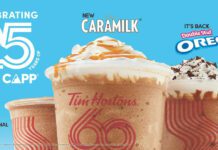It is no secret Canadians love their coffee. In fact, according to NPD’s latest report “What’s Brewing in the Canadian Coffee Market,” the average Canuck consumes approximately 12 cups of java per week.
It’s this love for caffeine that has led to an intensely competitive Canadian marketplace where coffee machine manufacturers, roasters, restaurant operators and more are seeking to capture a greater share of the cup. And, the influx of single-serve coffee devices for convenient home use, combined with a coffee war that’s been brewing among quick-service restaurant chains, is presenting consumers with more choices than ever.
So, what does the Canadian customer want? According to the “What’s Brewing” study, two-thirds of Canadians consume coffee at home, although more than two-billion coffee servings were poured at restaurants in 2013. The majority of Canadians (66 per cent) report they consume about the same amount of coffee now as they did a year ago. That said, more Canadians are reporting increased consumption than decreased consumption. More specifically, for those Canadians consuming more, increases are equally as likely to occur at home as out-of-home. For Canadians drinking less, the majority of the decline is out-of-home.
Increases to in-home coffee consumption are due to convenience, especially as single-service machines, such as Keurig and Tassimo, continue to gain popularity. In Canadian homes, single-serve device penetration has jumped 10 points during the last year, to 41 per cent in 2013. And, four in 10 Canadian coffee drinkers now have a single-serve device in their home; the majority of those owners has had the machine for less than two years (66 per cent) and considers it their primary device (63 per cent).
Although single-serve coffee machines are convenient, the slim selection is a key advantage for restaurant operators looking to increase out-of-home consumption at the expense of in-home consumption. That’s why quick-service restaurants’ coffee launches that focus on a quality, innovative product are resonating with Canadians. Today, 81 per cent of out-of-home coffee purchases occur at Tim Hortons, McDonald’s and Starbucks combined.
It’s no longer enough to sell a standard brewed cup of coffee. These days, consumers want an enhanced offering with a focus on stronger brews. In fact, 37 per cent of Canadian coffee drinkers cite a preference for bold to very bold roasts. Espresso-based beverages are also increasing in popularity, with restaurants serving three-per-cent more espresso beverages in 2013, compared to 2012. As a result, Canadians are spending more money on their daily coffee habit. And average eater checks that include an espresso beverage are 20-per-cent higher than average eater checks with brewed coffee. Canadians are buying in, and it shows. In 2013, most major quick-service restaurants with a coffee program increased coffee prices despite declining coffee crop pricing.
It’s clear a well-designed coffee program attracts new customers, promotes menu innovation and increases revenue for a menu item that is increasing in consumption, while decreasing in cost.




















